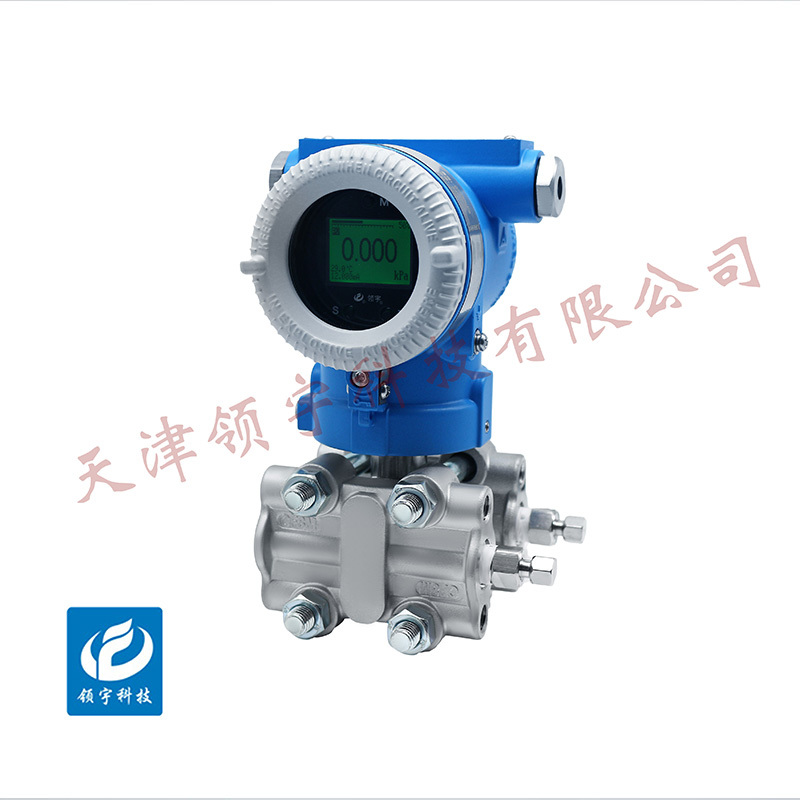Product display
LPT-C Series Differential Pressure Transmitter
● High-performance monocrystalline silicon core
●24-bit high-precision ADC
● Wide range of transferability
● Can be configured via HART handheld device
● Dual Compensation for Circuit and Core
● Output damping is adjustable
●Equipped with an ultra-low temperature drift type (20 ppm/℃ typical)
● Equipped with RS485 functionality (please specify when ordering)
Key words:
Classification:
Download information:
Product Description
Product Overview Product overview
The LPT-C series intelligent differential pressure transmitter features a microprocessor-based, modular circuit design that delivers excellent anti-interference performance. It is equipped with an internal temperature sensor that compensates for variations, significantly enhancing measurement accuracy while minimizing temperature drift. As a result, the transmitter boasts outstanding long-term stability, high reliability, and robust self-diagnostic capabilities. Users can easily calibrate, configure, and set up the transmitter using a HART-compatible handheld communicator. The device also includes user-friendly interface sections with tiered password access levels, allowing for convenient customization to meet specific operational needs. This transmitter is widely used in industries such as chemical processing, metallurgy, water management, power generation, and petroleum applications.
Performance metrics TECHNICAL PARAMETERS
| Measuring medium | Gas, liquid, vapor | ||
| Measurement range | Minimum range (kPa) | Measurement Range and Sensor Limit Values (kPa) | |
| Maximum range (URL) | Minimum Range (LRL) | ||
| 1.0 | 6.0 | -6.0 | |
| 4.0 | 40 | -40 | |
| 10.0 | 100 | -100 | |
| 12.5 | 250 | -100 | |
| 25.0 | 500 | -100 | |
| 25.0 | 1000 | -100 | |
| 87.5 | 3500 | -100 | |
| Measurement range ratio: | 40:1 | ||
| Accuracy | Class 0.075, Class 0.1 (including linearity, hysteresis, and repeatability) | ||
| Impact of the range ratio: | Class 0.075 | When the range ratio is between 1:1 and 10:1, the calibration accuracy is ±0.075% of the span. | |
| When the range ratio exceeds 10:1, it is ±[0.0075 × range ratio]%; | |||
| Class 0.1, Class 0.2 | With a range ratio of 1:1 to 10:1, the calibration range is ±0.1%. | ||
| When the range ratio exceeds 10:1, it is ±[0.05 + 0.005 × range ratio]%; | |||
| Stability | Class 0.075 | The error over 36 months is ±0.15% of the full scale. | |
| Class 0.1 | The error over 36 months is ±0.2% of the full scale. | ||
| Class 0.2 | The error over 36 months is ±0.25% of the full scale. | ||
| Temperature affects | Class 0.075 | Zero-point or span error is ±0.15% of the full scale, per 28°C. | |
| Class 0.1 | Zero-point or span error is ±0.2% of the full scale, per 28°C. | ||
| Class 0.2 | Zero-point or span error is ±0.25% of the full scale, per 28°C. | ||
| Power supply impact | Less than ±0.005%/V of the calibration range | ||
| Vibration Impact | Less than ±0.05%/g of the full scale range | ||
| Installation Impact | Zero drift is no more than 0.25 kPa; this error can be eliminated by zero adjustment without affecting the measurement range. | ||
| Hydrostatic Pressure Impact | ±0.05% URL/10 MPa | ||
| Output signal | 4-20mA + HART (can also feature RS485) | ||
| Power supply | 15-36VDC | ||
| Ambient temperature: | -40°C to 85°C | ||
| Medium temperature | -40°C to 120°C | ||
| Storage temperature | -40°C to 85°C | ||
| Display | 7-digit LCD display | ||
| Protection Level | IP65 | ||
| Explosion-proof rating | Exd IIC T6Gb | ||
External dimensions APPEARANCE OF SIZE

Installation Requirements INSTALLATION
The differential pressure transmitter can be directly mounted onto a 2-inch pipe via an installation bracket, or alternatively installed directly on a wall or instrument panel.
Three-valve manifold installation: After installing the three-valve manifold, close the high- and low-end valves on both sides, open the middle balance valve, zero the differential pressure transmitter, then reopen the high- and low-end valves while keeping the middle balance valve closed.
To remove the differential pressure transmitter: First, open the middle balance valve, then close the high- and low-end valves on both sides. The middle balance valve can remain fully open during this process, allowing you to safely disconnect the differential pressure transmitter.
Previous Page
Next Page
Previous Page
Next Page
Related Products
Product inquiry
If you are interested in our products, please leave your e-mail, we will contact you as soon as possible, thank you!
Tianjin Ling Yu Technology Co., Ltd.
Operator:86-22-58554679
Fax: 022-58285528
Manager Ding: 86-18902041592
WhatsApp:8618902041592
Complaint Hotline:86-15822286986
Factory Address: No.5 Yingbin Road, Xiqing District, Tianjin
E-mail:sales@lingyukeji.com
Purchasing Department E-mail:lykj_tj@163.com
WhatsApp Scan

Copyright©2022 Tianjin Ling Yu Technology Co., Ltd



